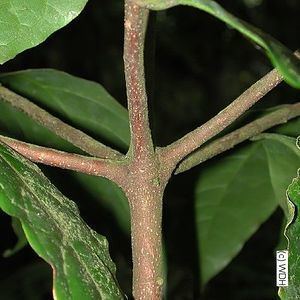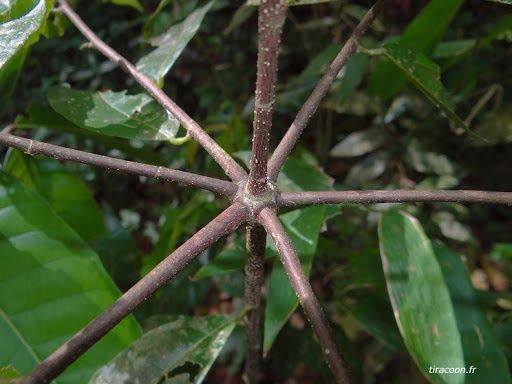|
THE FASCINATING STORY OF THE SWIZZLE STICK
Researcher : Patricia Bissessar I never knew that in Trinidad we had a tree called the swizzle stick tree which got its name because its branches were cut and dried and made into natural swizzle sticks . The swizzle stick’s story is an interesting one of humble beginnings. In this blog, we will briefly explore the history of the swizzle stick, its uses, how they are made. I will also attempt to clear up any misconceptions or confusion by members. According to my research, the Swizzle Stick made its appearance around the 1600’s on a sugar cane plantation in the West Indies and was used to stir a refreshing rum elixir called “Switchel” made from a mixture of water and molasses. The first print mention of the swizzle comes in 1788 (“A Classical Dictionary of Vulgar Tongue”), but the stick seems to have pre-dated that by at least a century and raced back to the arrival of enslaved workers brought from Africa to the West Indies to work on the sugar cane plantations where the sugar cane was fermented and made into sugar , molasses and rum. Annie Brassey author of the book “In the Trades, the Tropics, & the Roaring Forties”, found the tool in use in Trinidad in 1885 and make mention of her intent to take back to England some of these special sticks to stir mixed drinks. Her book gives the following recorded insight into how the local islanders of Trinidad transformed a branch of the Quararibea turbinate tree into a manual hand blender: They are cut from some kind of creeper, close to a joint, where four or five shoots branch out at right angles to the stem, so as to produce a star-like circle, resembling the spokes of a wheel, each radiating twig being about two inches long. Cocktails of all kinds are a great institution in Trinidad and are mixed with these sticks. The branches she was referring to were cut from the Quararibea turbinate tree ,native to Martinique and a few other Caribbean islands including Trinidad and Tobago. Botanists call it Quararibea turbinata, but it was known to locals as the swizzle stick tree. These trees sprout branches that end in tiny spokes, which spread out like the points of a star. When dunked in an unmixed cocktail and rolled between one’s palms, the sticks work much like simplified immersion blenders. The all natural harvested wooden stir stick, popularly used in the Caribbean, was also known as Bois Lélé in Martinique .Local islanders would make a ‘rum swizzle’ from rum, water,ice and aromatic flavourings, by rapidly spinning a dried branch of the tree between the palms of the hands, thus putting the tiny bicycle spoke-like twigs to work, resulting in a deliciously frothy and evenly chilled beverage. Eventually, the stick migrated back to the homeland from the British colonies, and by the early 1920s, the swizzle stick had found a new purpose. Queen Victoria and the other refined women of her era used the sticks or glass and plastic imitations of them to stir the bubbles out of their Champagne, thus preventing any rather unladylike emissions of air . Finally, the stick entered its modern era when inventor Jay Sindler needed a way to remove the olive from his martini without using his fingers. So he sketched out an idea of a barbed wooden spear featuring a small paddle at the other end, which could be imprinted with the establishment’s name or logo. A problem was solved and bars had a new cocktail stirrer . Who knows maybe the rural artists of India was inspired by the natural swizzle stick when they created the Dhal Ghutni Swizzle Stick which many of us still use today to swizzle and purée dhal. It is also interesting to note that like many Caribbean Hindustani nouns, ghuṭnī is derived from the verb of the action performed by this kitchen tool. Ghuṭnī comes from the verb ghoṭe meaning to mix, dissolve or swizzle. I also use my mother’s Dhal Ghutni Swizzle Stick to swizzle the ingredients when making callallo. N.B In reading some of the comments made by members with prior posting on the swizzle stick tree it would appear that there is some confusion about the Quararibea turbinate or swizzle stick tree .This tree is the same as the lay lay tree . I did attempt to do further research to clarify this issue and this is what the research says: Ø The Bois Lele swizzle stick as it is called in Martinique is made from the dried wood stems of the Quararibea turbinata tree (aka the “swizzle stick” tree!) which is an aromatic plant native to the Caribbean. It is small perennial tree or shrub.The branches of this tree form with side branches radiating outward from a central point, like spokes on a bicycle wheel. Ø Botanical name: Cordia collococca what we refer to as Lay Lay tree in T & T is a short-deciduous tree with a moderately thick, single-layered crown that is often wide and spreading, usually growing around 5 - 15 metres tall but occasionally reaching 35 metres.The red fruit / lay lay , which resembles a cherry, has a sweet flavour and is eaten greedily by birds. The Lay Lay berry is one of the lesser known fruit treasures of Trinidad, found mostly in the south and eastern parts of the island. ( Sources: Useful Tropical Plants ; 62 fruits of Trinidad) I have also tried to show differences in both trees by including a few photos. I am just stating what the research says and I am certain back in the early days our ancestors would have been quite creative and used branches from other trees to make natural swizzle sticks. (source: Angelo Bissessarsingh's Virtual Museum of Trinidad and Tobago, June 29, 2023)
0 Comments
Leave a Reply. |
T&T news blogThe intent of this blog is to bring some news from home and other fun items. If you enjoy what you read, please leave us a comment.. Archives
June 2025
Categories
All
|





 RSS Feed
RSS Feed